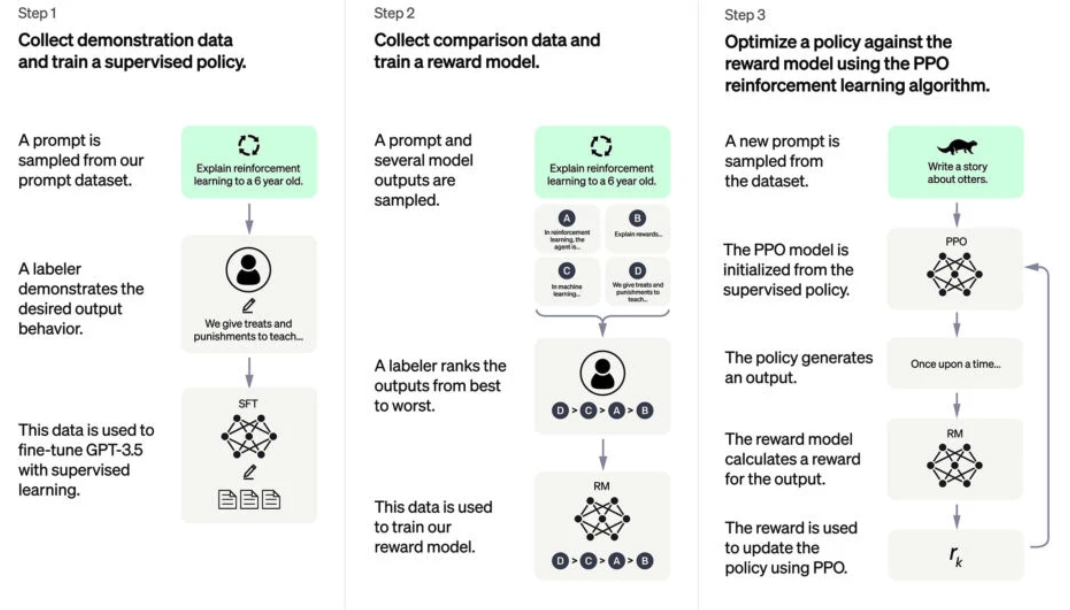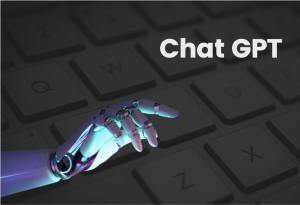Chat GPT is an artificial intelligence program that generates dialogue. Created by Open AI, this high-capable chatbot uses machine learning algorithms to process and analyze large amounts of data to generate responses to user inquiries. This language processing program is able to understand human language as it is spoken and written, allowing it to understand the information it is fed, and what to spit back out. A student can type in a question, and ChatGPT spits back out an easily understandable answer – in a variety of formats with precise stipulations.
For example, you can ask the question, “Explain how climate change affects endangered species.” You can tell it, “Write me a poem,” and when it does, say, “Now make it more exciting.” You even ask it to create a reference page and use APA 7th edition.
More about ChatGPT:
ChatGPT: Everything you need to know
What is ChatGPT and How is it Used in Education?
Features and Limitations of ChatGPT
One of the key features of chat GPT is its ability to generate responses like humans in real-time, based on the user’s input. It can give natural answers to questions in a conversational tone and can generate stories, essays, and poems. Moreover, Chat GPT can:
- Answer questions
- Solve math equations
- Translate between languages
- Debug and fix code
- Write a story/poem
- Classify things
Perhaps more amazing is the ease at which ChatGPT produces these responses. Students could potentially spend hours researching and drafting an essay on quantum mechanics, whereas ChatGPT can produce a well-written alternative in seconds.
While ChatGPT can populate a pristine essay on the cultural impact of the Spanish-American War, there are limitations. Due to its infancy, the chatbot may generate incorrect information or have a comprehensive understanding of a topic because answers are based on data that is limited to 2020 and prior.
Here’s what ChatGPT can do:
Five Amazing Things People Have Done with Chat GPT
How does it work?
Pulling from a large dataset of text, Chat GPT uses this dataset to learn about language, grammar, and the structure and meaning of words and sentences. This enables it to understand the context and intent of user queries and generate appropriate responses.

Source: OpenAI
The Impact on Learning
While ChatGPT is a huge advancement in technology, it poses serious concerns and challenges for learning. This appears to be the newest wave of academic dishonesty, which is quickly turning into a tsunami. There are technologies such as GPTZero that can detect plagiarism, but the greater concern is that students are not engaging in the writing process and missing opportunities for research, critical thinking, and formulating their own response.
Understandably, many faculty are responding with panic and considering oral assignments or detection tools to combat plagiarism. Rather, faculty should be encouraged to harness the tool’s potential to aid instruction.
So, how can Chat GPT actually help faculty or students in the classroom? Let’s ask Chat GPT:
How can Chat GPT actually help faculty or students in the classroom?
Teachers can use ChatGPT, a large language model trained by OpenAI, in the classroom to engage and educate students in a variety of ways. Here are a few ideas:
As a writing prompt generator: ChatGPT can help teachers generate engaging writing prompts for students to respond to. For example, a teacher could ask ChatGPT to generate a story starter or a creative writing prompt, and then have students use the prompt as the basis for their own writing. This can be a fun and interactive way to get students excited about writing.
As a reading comprehension tool: ChatGPT can be used to help students improve their reading comprehension skills. Teachers can ask ChatGPT to generate a passage on a topic that students are studying, and then have students read the passage and answer questions about it. This can be a helpful way to assess students’ understanding of the material and to identify areas where they may need additional support.
As a vocabulary builder: ChatGPT can help students expand their vocabulary by generating sentences using words that students may not be familiar with. Teachers can ask ChatGPT to generate sentences using a particular word, and then have students guess the meaning of the word based on the context of the sentence. This can be a fun and interactive way to help students learn new words and improve their vocabulary.
Overall, ChatGPT can be a valuable tool for teachers looking to engage and educate their students in new and exciting ways. By using ChatGPT in the classroom, teachers can help students develop important skills such as writing, reading comprehension, and vocabulary building. (www.helloteacherlady.com)
The above text was written by Chat GPT in lesson that one minute. Imagine the amount of time that can save faculty, not to mention the possibilities for learning in the classroom.
More advice on using ChatGPT in the classroom
ChatGPT Advice Academics Can Use Now
Embrace the Bot: Designing Writing Assignments in the Face of AI
Unleash the Power of Chat GPT in Education!
Yes, you can use Chat GPT with Students:
Chat GPT Across the Curriculum
CETAL hosted a special workshop, led by Dr. Jen Talbot, to address the concerns and suggested response to this new technology. She provided an overview of Chat GPT’s capabilities and a collection of suggested approaches, as well as an opportunity to collaboratively brainstorm likely effects in our respective disciplines and assignment-specific strategies to address those effects.
View the Chat GPT presentation recording
View the Chat GPT presentation slides
View the ChatGPT presentation handout
References:
Bowman, Emma. (2022, December). ChatGPT could transform academia. But it’s not an A+ student yet. NPR. https://www.npr.org/2022/12/19/1143912956/chatgpt-ai-chatbot-homework-academia
D’Agostino, Susan. (2023, January 20). Academics work to detect ChatGPT and other AI writing. Inside Higher Ed. https://www.insidehighered.com/news/2023/01/20/academics-work-detect-chatgpt-and-other-ai-writing?utm_source=Inside+Higher+Ed&utm_campaign=6771fc5f7b-DNU_2021_COPY_02&utm_medium=email&utm_term=0_1fcbc04421-6771fc5f7b-199977845&mc_cid=6771fc5f7b&mc_eid=007c4da0db
Kramer, Zoe. (2022, December). What is ChatGPT and how does it work? Freshened. https://www.freshered.com/what-is-chat-gpt-and-how-does-it-work/
Hughes, Alex. (2023, January 16). ChatGPT: Everything you need to know about OpenAI’s GPT-3 tool. BBC Science Focus Magazine. https://www.sciencefocus.com/future-technology/gpt-3/
Mintz, Steven. (2023, January 16). ChatGPT: Threat or menace? Higher Ed Gamma. https://www.insidehighered.com/blogs/higher-ed-gamma/chatgpt-threat-or-menace
Ramin, Shana. (2022, December 13). 3 ways teachers can use ChatGPT in the Classroom, According to ChatGPT. Hello, Teacher Lady. https://www.helloteacherlady.com/blog/2022/12/3-ways-teachers-can-use-chatgpt-in-the-classroom-according-to-chatgpt

